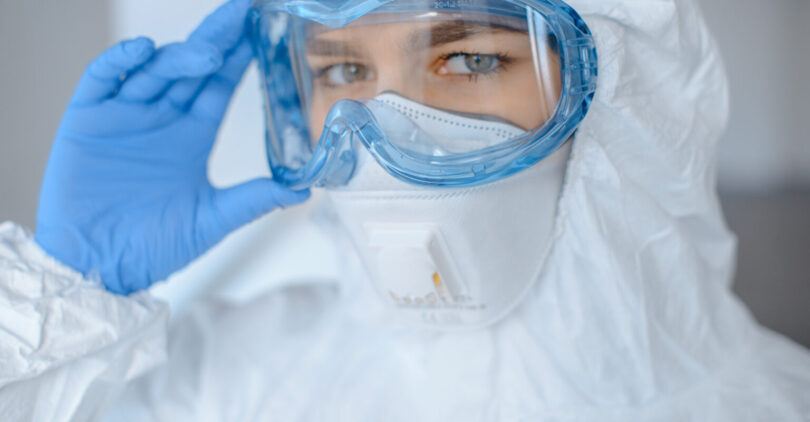Contact us
- Burjuman Business Tower Office 2414 Bur Dubai, P.O. Box: 390667, Dubai UAE
- healthcare@gazminintl.com
- (+971) 4235 5866 / 67
-
Monday – Friday :
9:00 AM – 6:00 PM
Different types of Coverall Suits
Depending on the level of protection:
Level 1: For situations involving minimal risk, such as providing basic care, routine isolation, visitor cover gowns, or in a standard treatment clinic or hospital.
Level 2: Used in situations when there is a low risk of infection, such as blood draws, suturing, or working in an Intensive Care Unit (ICU) or a pathology lab.
Level 3: Used in situations where moderate risk is involved, such as arterial blood draws, insertion of an intravenous (IV) line or catheter, working on patients in the emergency room, or in trauma situations.
Level 4: Used in situations when there is a high risk of infection, such as during extended fluid exposure in intensive operations or surgery and in case of pathogen resistance, or when infectious disease are suspected (non-airborne).

Type 1: Gas Tight Coveralls
Type 1 coveralls are gas tight and offer the highest level of protection against workplace hazards. Type 1 suits are completely sealed against the environment, protecting the wearer against any chemical contamination in the form of either liquid or gas, as well as aerosols and solid particles. They are subjected to a test that ensures they are gas tight and are re-tested regularly. These coveralls are used in highly hazardous industrial environments and by emergency workers.
Type 2: Non-gas Tight
Type 2 coveralls are non-gas tight. They prevent dust, liquids and vapours from entering the suit but must retain a positive pressure to do so. Type 2 suits, like Type 1 suits, are used in highly hazardous industrial areas and by emergency responders.
Type 3: Protection against Liquid
Type 3 coveralls protect the wearer against liquids. They are able to withstand strong, directional jets of liquid. They are tested by having strong jets of liquid blasted at weak points on the suit (seam joins, zip fastenings). Because of these testing requirements, suits of this nature require a barrier fabric and sealed seams. Type 3 suits have a subcategory of classes which is determined by testing their breakthrough time; the amount of time it takes for liquid to enter the suit. Only a miniscule fraction of liquid is permitted to enter before it is deemed a failure. Lower end suits, Class 1, have a breakthrough time of 10 minutes with Class 6 suits on the higher end of the spectrum lasting for over 6 hours without liquid penetration.
